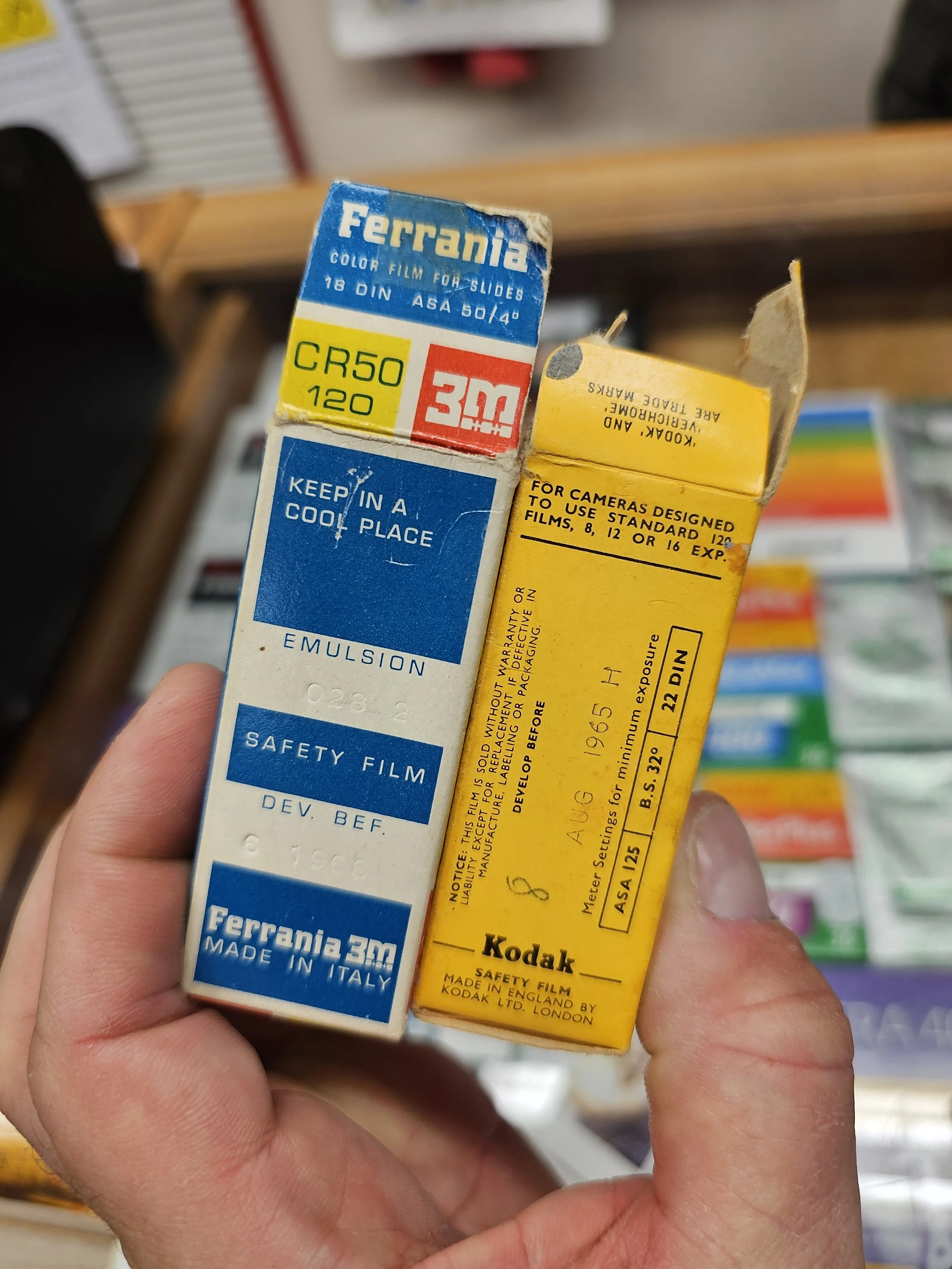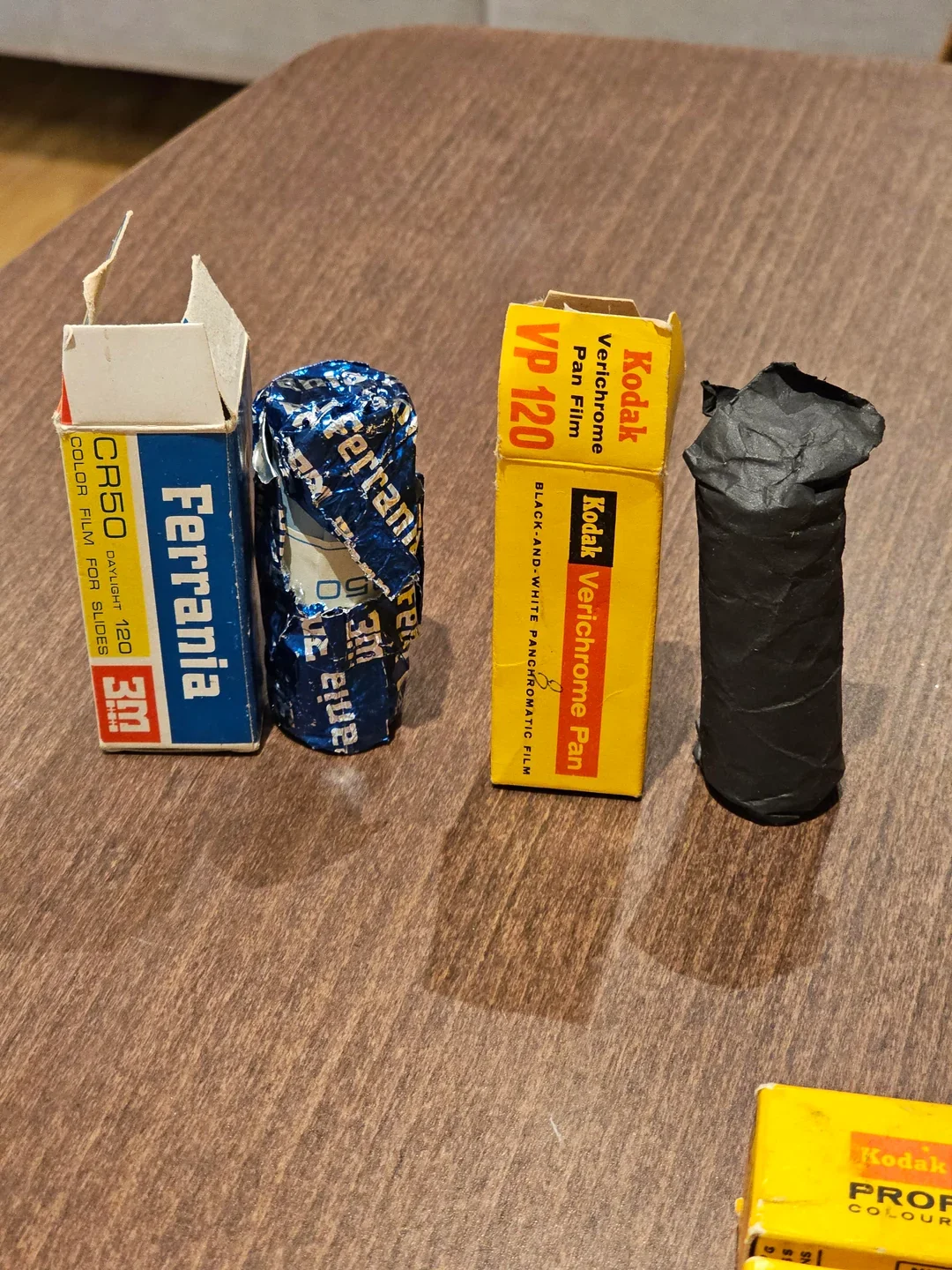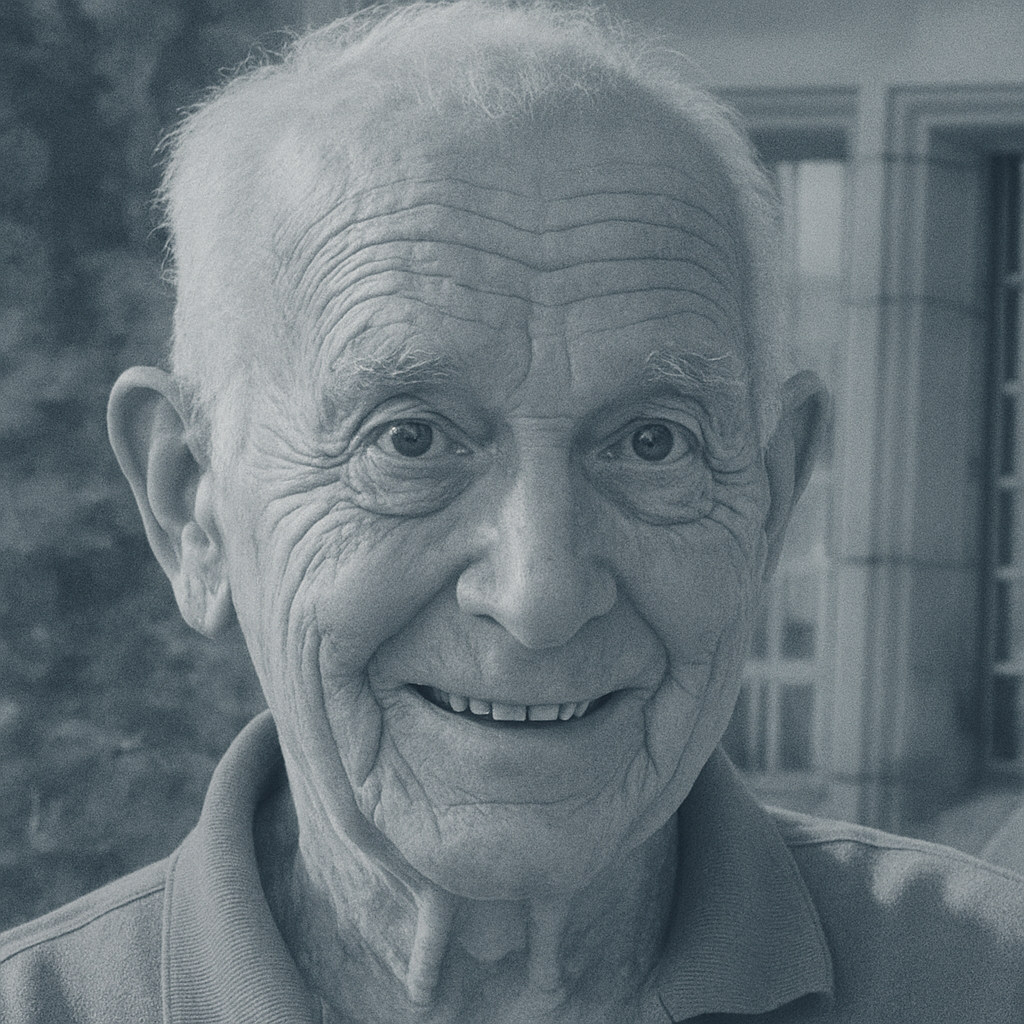The Ziggurat Mystery
Unseen 1960s UEA photographs found on forgotten negatives
“I thought I was buying unused rolls of film on Portobello Road Market in London. Instead, I uncovered a hidden archive.”
At the Portobello Road Market in London, I picked up thirteen rolls of old, expired film stock. The seller and I both believed they were unused, simply relics of another time. But on the train ride home, curiosity got the better of me. When I looked more closely, I realised they weren’t blank at all. It was 15 March 2025, and I had just stumbled upon negatives dating back to 1965 and 1968. Two of the rolls were still undeveloped, which meant nobody had ever seen the photographs they contained.
What they revealed was extraordinary.
One roll held images of Lindisfarne Castle, including a striking photograph of a young man holding a bird, perhaps a pigeon or dove, a frozen moment of intimacy and freedom. The same roll also showed fragments of Dunstanburgh Castle, adding to the sense of a journey along the Northumberland coast.
The second roll was more damaged, but one frame revealed a distinctive modernist campus: the ziggurat-style buildings of the newly built University of East Anglia (UEA), completed in 1967.
After some research, I discovered the buildings belonged to UEA’s earliest years. These forgotten images carried the gaze of a photographer moving between history and the future: from the medieval stones of Lindisfarne to the bold concrete geometry of a new university.
The Film
The discovery came from two rolls found among the thirteen I bought:
Ferrania CR50 Dia Film (expiry 1968) – a colour reversal film for slides. By the time I developed it, the decades had taken their toll. The emulsion layers had melted and stuck together, leaving nearly all the roll unusable. Only two frames could be recovered, heavily damaged, but they revealed something remarkable: rare early colour images of the UEA Ziggurats.
Kodak Verichrome Pan 120 (expiry 1965) – a black and white film that survived well. It developed cleanly and revealed crisp images of Lindisfarne Castle, a smiling young man with a bird, and views of Dunstanburgh Castle.
Together, the two films form a fragile time capsule. The colour roll hints at what was lost, while the black and white roll carries the story forward with clarity.


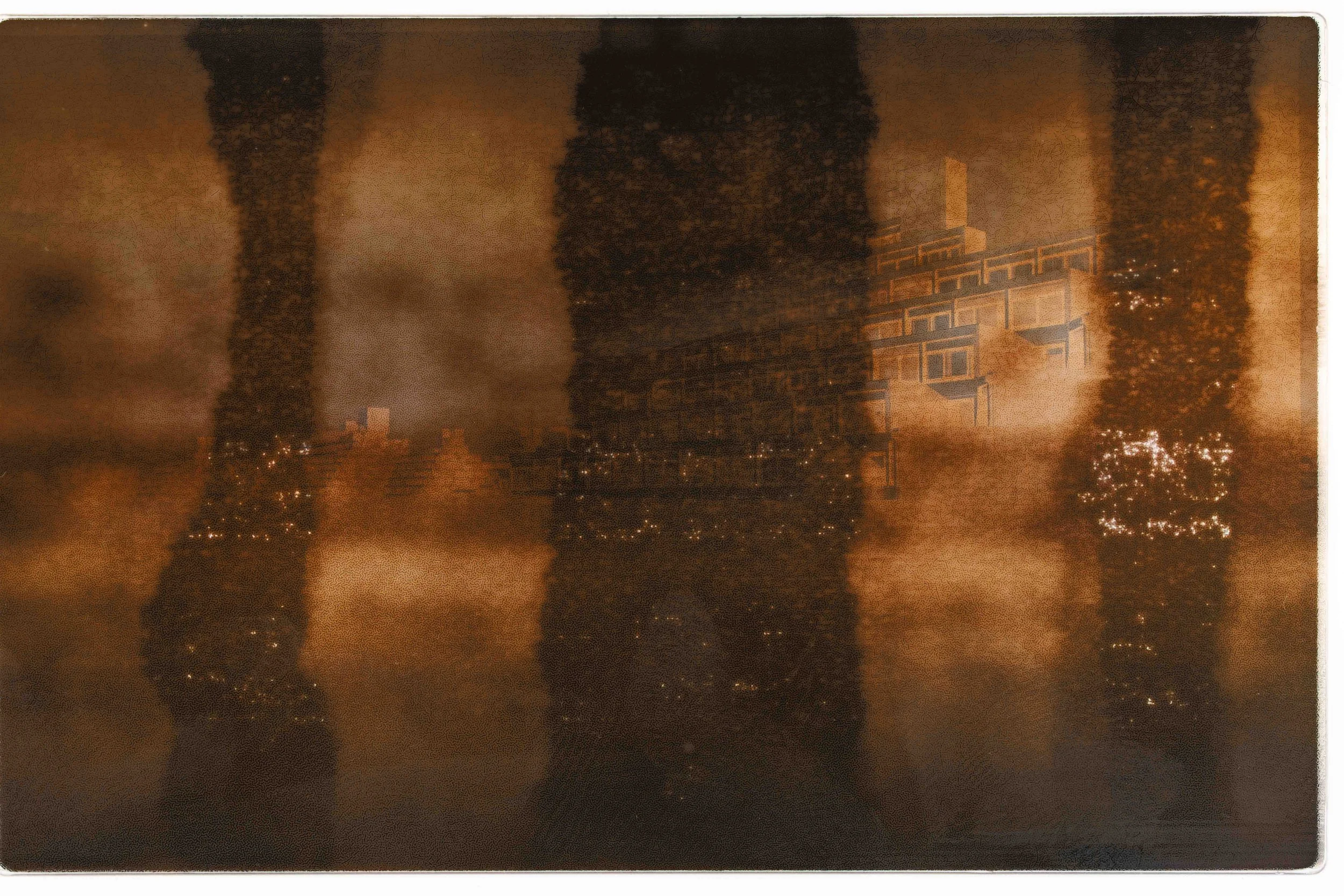


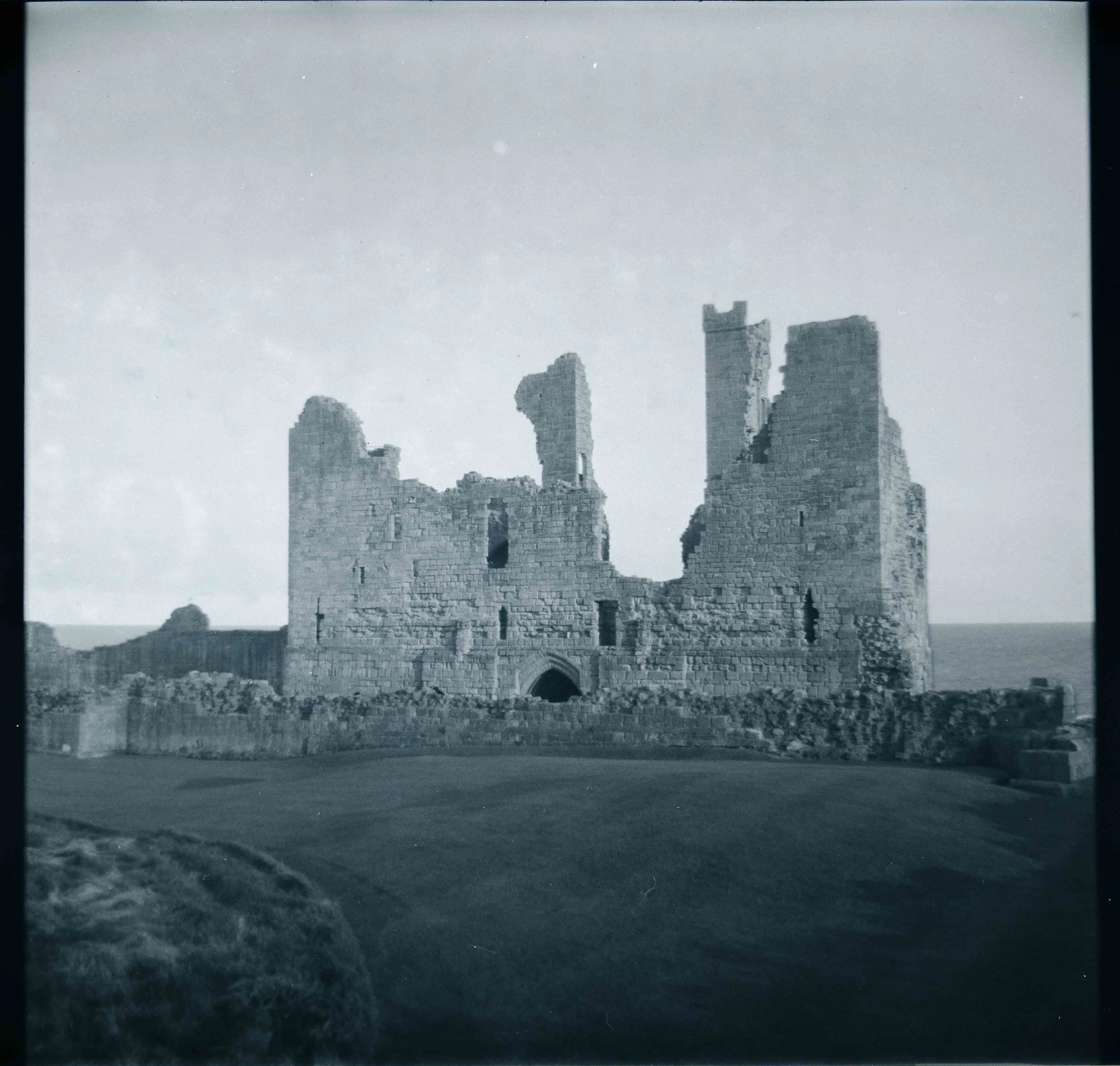


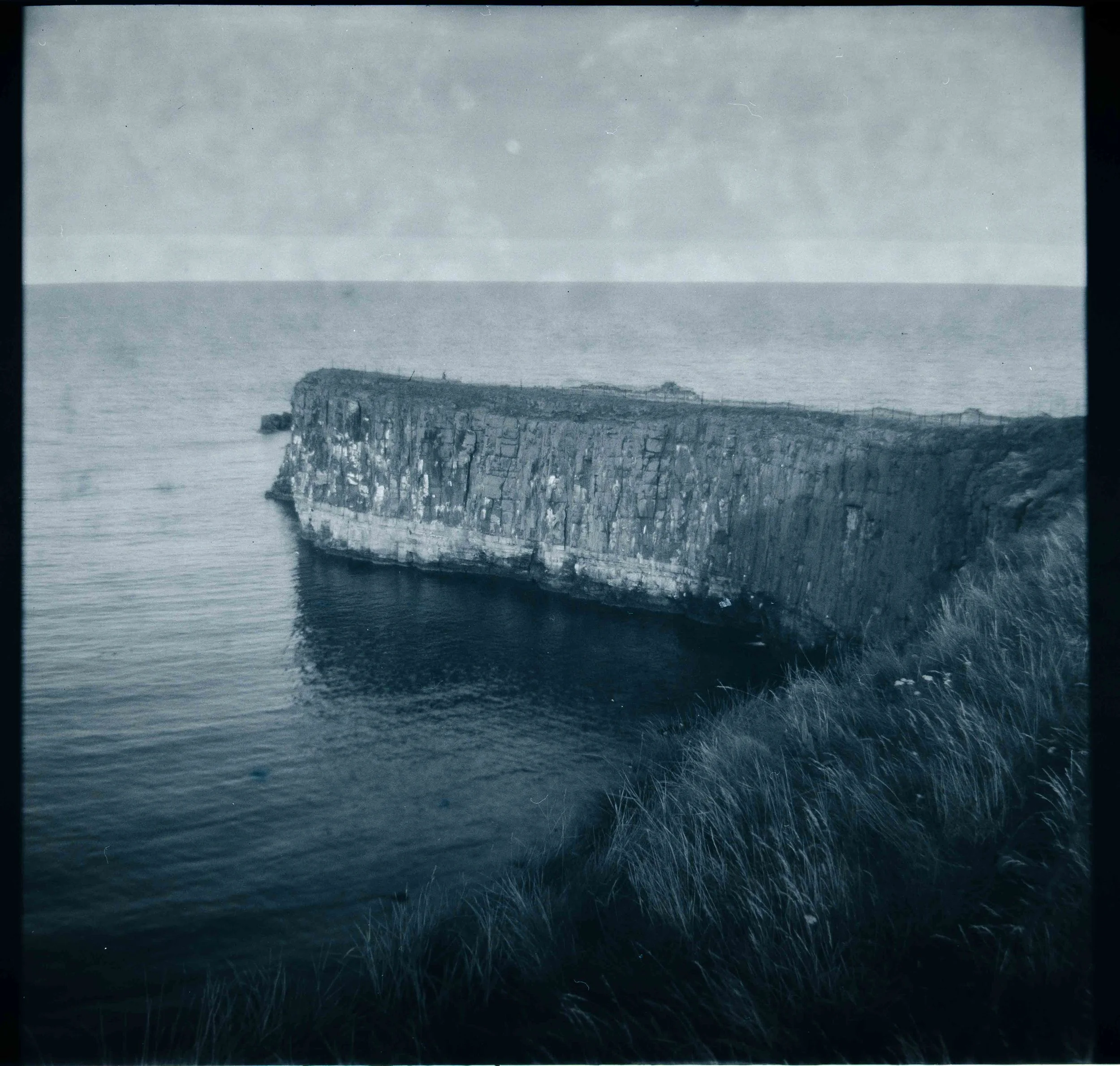
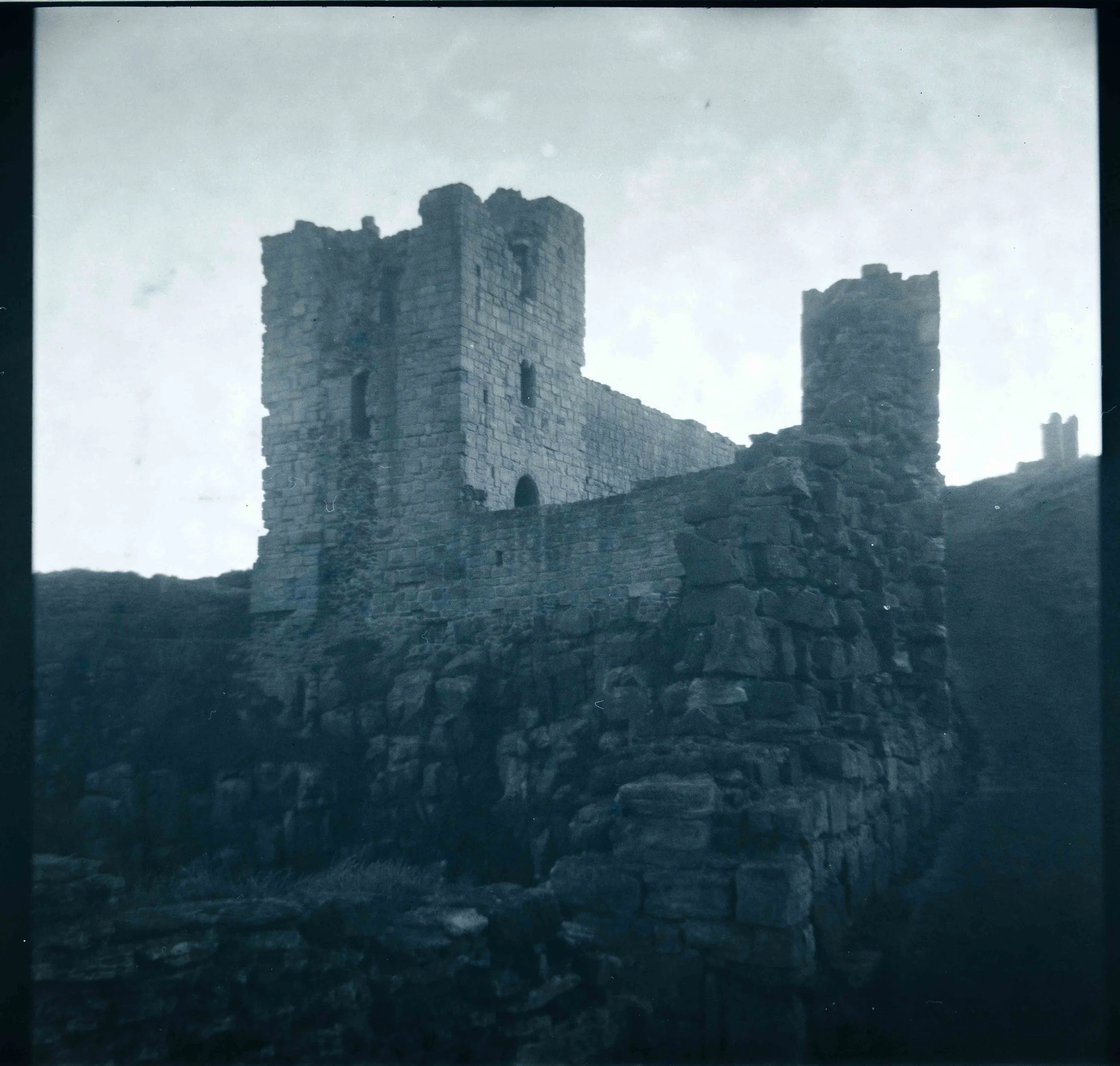


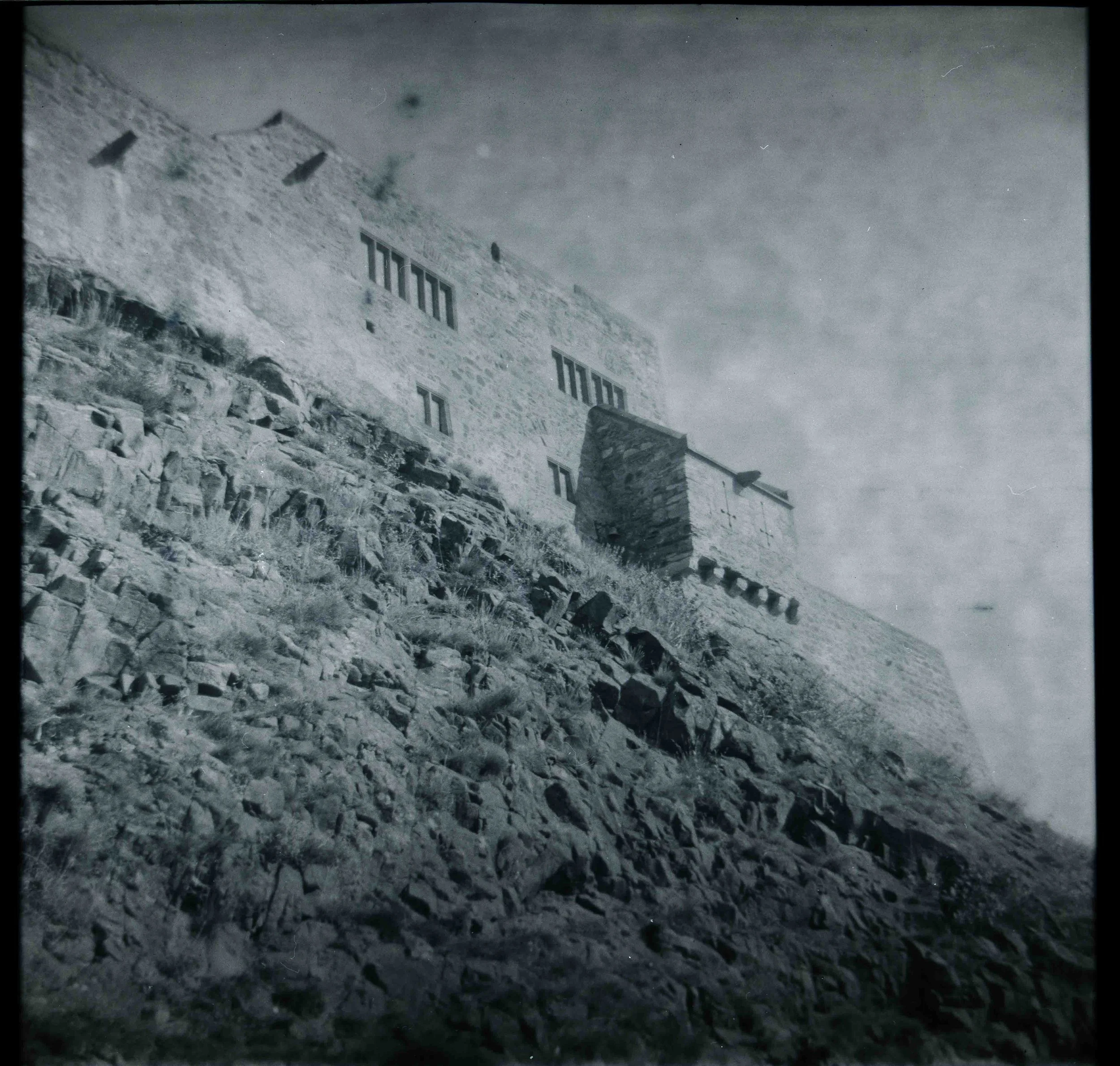

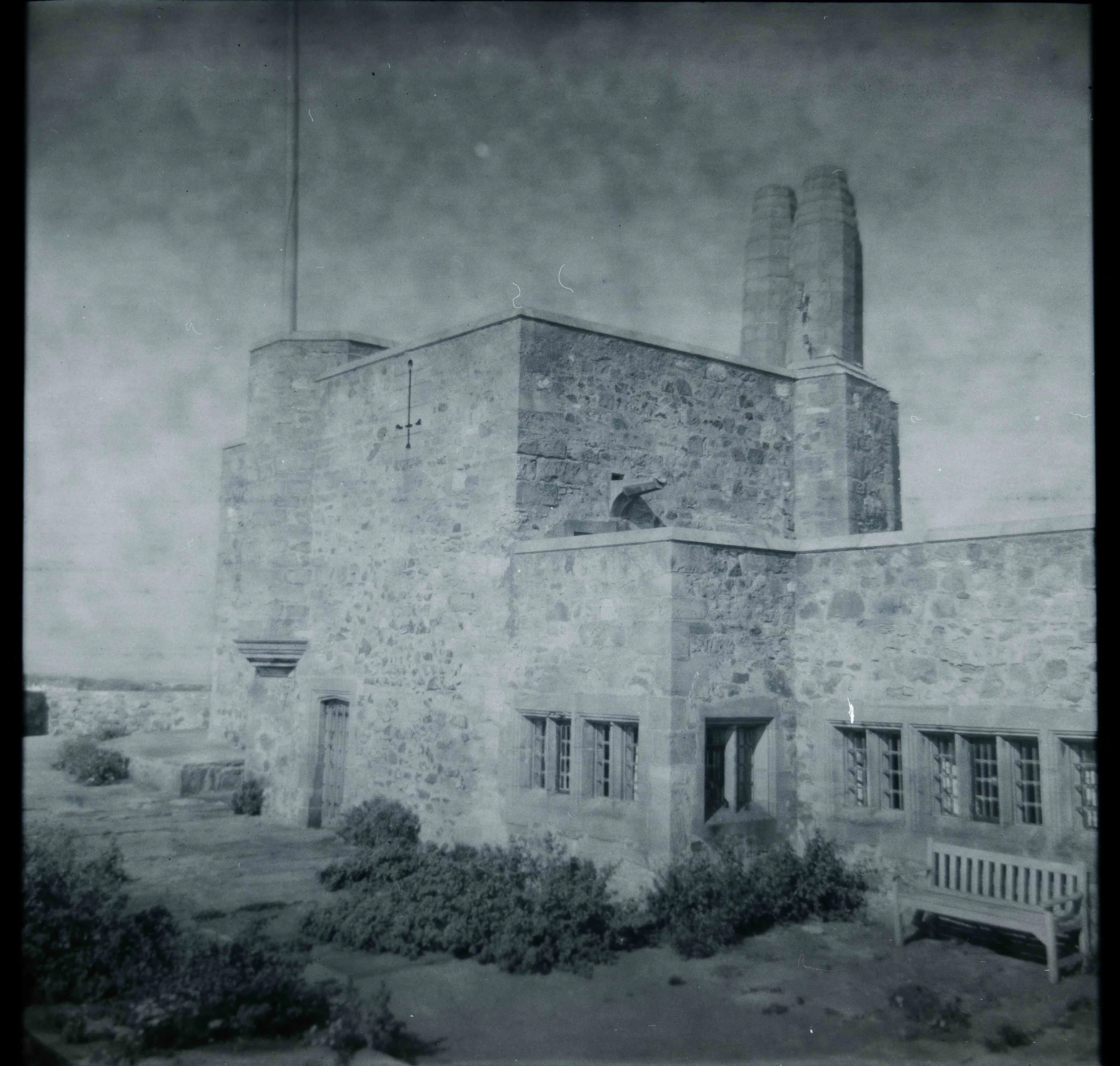
A Mystery That Remains
Who was behind the lens, and who was the young man holding the bird? Were both rolls connected to the same person? If he were a student at UEA in the late 1960s, he would likely be in his eighties today.
The photographs raise more questions than they answer. I shared them online, and through fragments of memory and chance searches, the mystery of the Ziggurats slowly connected back to UEA. The alumni office even suggested the story might resonate with their community, who still remember those early years of the campus.
Hunt for mystery snapper who took 1960s UEA shots
The story has now found its way to the BBC, where it was featured on BBC Radio Norfolk and in a BBC News online article. It has been incredible to see how far these forgotten photographs have travelled — from a dusty roll of film on Portobello Road to a story heard across Norfolk and beyond. The radio interview is included below, with full credit to BBC Radio Norfolk.
You can also read the article here:
BBC News – Forgotten 1960s UEA photos spark search for mystery man
For me, this is what makes found film so compelling. It is not only about images. It is about fragments of lives, glimpses of time, and the way a photograph can travel across decades to find a new witness.
If you recognise the young man, or studied at UEA in the 1960s and remember those early days, please get in touch.
Recording courtesy of BBC Radio Norfolk. © BBC. Used here for editorial and non-commercial purposes with credit.
Update – 15. October 2025
Since publishing this story, I have added an AI-generated visualisation of the young man, aged approximately 75–85, to help with identification.
The image was created as a respectful reconstruction, using the original photograph as a reference.
If you recognise him, or know someone who might, please get in touch.



